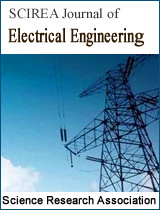Electrochemical Engineering Study of Heteroaromatic Molecular Protective-films to Metal-Alloys
DOI: 10.54647/dee47284 113 Downloads 253514 Views
Author(s)
Abstract
The syntheses and characterisation of Rare-Earth-Metals (REMs) heteroaromatic complexes, via the use of green organic esters such as Pyridinecarboxylate (Pyc) or heteroaromatic organic to form stable compounds ie. Lanthanide-Pyridinecarboxylate (Ln-Pyc), has been demonstrated to be one of the preferred compounds to form a good protective-film over metal-alloys. The electrochemical techniques of Linear Polarisation Resistance (LPR) and Cyclic-Potentiodynamic Polarisation (CPP) used in the studies demonstrated strong protective properties to the metal-alloys from the E corr-potential and the I corr-current. This is because the I corr-current was reduced by many folds when coupons were immersed in NaCl (0.01M) as a control bulk-electrolyte containing Ln-Pyc complexes. The data has also confirmed that the Ln-Pyc complexes clearly displayed a mixed-type of protective function. Thus, the overall metal dissolution rate of metallic alloys is mitigated and also indicated a healing mechanistic process involves in building a dense molecular composite-films, when the alloy-coupons were immersed into the solution containing REMs complexes. The characterisation of in-situ treated surfaces via the use of ATR-FTIR, FTIR-microscopy spectrum revealed the overall protective characteristics were discussed in this paper.
Keywords
Rare Earth Metals (REMs), Ligands, Heteroaromatic organics, Pyridine, Coordination Chemistry, Electrochemistry, Corrosion.
Cite this paper
Desmond TC Ang, Peter Junk, Glen Deacon, Maria Forsyth,
Electrochemical Engineering Study of Heteroaromatic Molecular Protective-films to Metal-Alloys
, SCIREA Journal of Electrical Engineering.
Volume 7, Issue 3, June 2022 | PP. 44-57.
10.54647/dee47284
References
| [ 1 ] | J. O. M. Bockris, S. U. M. Khan, Surface ElectroChemistry (A molecular Level approach), Plenum Press, New York & London, 1993. |
| [ 2 ] | D. Tytgat, B. Solvay et Cie., (Ed.: E. P. Appl.) p.21 French, 1981 |
| [ 3 ] | V. R. Pludex, "Design and Corrosion Control", John Wiley and Sons, USA, 1997. |
| [ 4 ] | F. Blin, (PhD Thesis), Monash University (Melbourne, Australia.), 2005. |
| [ 5 ] | N. Hackerman, E. S. J. Snavely, J. S. J. Payne, Journal of The Electrochemical Society, 113, no 7, 677, USA 1966 |
| [ 6 ] | H. J. Leidheiser, I. Suzuki, J. Electrochem. Soc. p 128, 242, 1981. |
| [ 7 ] | G. Trabanelli, V. Carrassiti, in Advanced in Corrosion Science and Technology, Vol. vol 1 (Eds.: M. G. Fontana, R. W. Staehle), Plenum Press, New York-London, p.147, 1970 |
| [ 8 ] | C. H. Evans, Biochemistry of the Lanthanides, Plenum Press, New York & London, 1990. |
| [ 9 ] | A. Kula, Journal of Thermal Analysis and Calorimetry, 68, 957. 2002, |
| [ 10 ] | ASTM, in ASTM, G31-72 (Ed.: ASTM), p. 7, 1999. |
| [ 11 ] | ASTM, in ASTM, G59-91 (Ed.: ASTM), p. 4, Philadelphia, USA, 1991. |
| [ 12 ] | ASTM, in ASTM G3-89 (Ed.: ASTM), ASTM, Philadelphia, USA, 1991, 1991, p. |
| [ 13 ] | M. Stern, Corrosion 1958, 14, 440. |
| [ 14 ] | K. E. Wilson, (PhD Thesis), Monash University, Australia (Melbourne), 2004 |
| [ 15 ] | T. Behrsing, (PhD Thesis) Monash University, Australia (Melbourne), 2003. |
| [ 16 ] | R. G. Kelly, D. W. Shoessmith, R. G. Buchheit, Electrochemical Techniques in corr. Sci & Engrg, Marcel Dekker Inc, NY, 2003. |
| [ 17 ] | B. R. W. Hinton, A. Raman, P. Labine, in Corrosion / '89 paper no. I-11, p 1, NACE, 1989. |
| [ 18 ] | Yost-E., W. Zeltner, M. Machesky, M. I. Tejedor-Tejedor, M. Anderson, in Geochemical Processes at Mineral Surfaces, Vol. 323, ACS, ACS Symposium Series 323, Washington, DC., 1986, p. 142. |
| [ 19 ] | M. Biber, W. Stumm, Environ. Sci. Techno 1994, 28, 763. |
| [ 20 ] | B. Humbert, M. Alnot, F.Quiles, Spectrochimica Acta (Part A) 1998, 54, 465 |
| [ 21 ] | M.C.Alverez-Ros, S.Sanchez-Cortes, J.V.Garcia-Ramos, Spectrochim. Acta (Part A) 2000, 56, 2471 |
| [ 22 ] | G. B. Deacon, C. M. Forsyth, T. Behrsing, K. Konstas, M. Forsyth, Chem. Commun. 2002, 2820. |
| [ 23 ] | A. Paneque, J. Fernandez-Bertran, E. Reguera, H. Yee-Madeira, Spectr. Lett. 2003, 36 (1&2), 83. |
| [ 24 ] | R. M. Cornell, U. Schwertmann, The Iron Oxides, VCH, 1996. |
| [ 25 ] | F. A. Cotton, G. Wilkinson, Advanced Inorganic Chemistry, 4th ed., John Wiley & Sons, 1980. |

